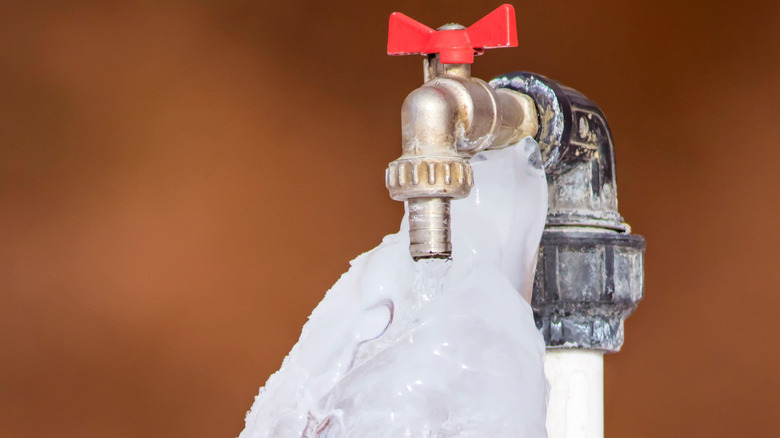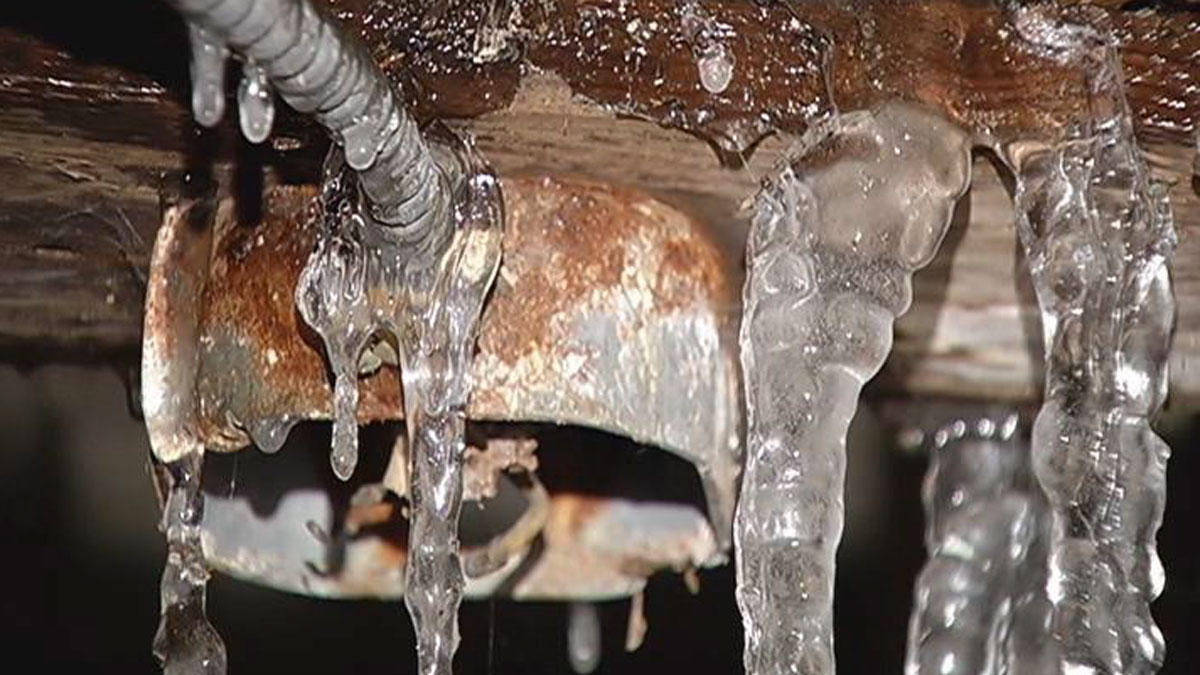Crucial Advice to Prevent Frozen Pipes in Cold Weather: Professional Guidance
Crucial Advice to Prevent Frozen Pipes in Cold Weather: Professional Guidance
Blog Article
Just how do you really feel with regards to Prevent Frozen Pipes ?

Cold weather can damage your plumbing, particularly by freezing pipelines. Below's how to prevent it from occurring and what to do if it does.
Intro
As temperature levels decrease, the risk of icy pipelines boosts, possibly leading to expensive fixings and water damage. Understanding how to stop frozen pipelines is crucial for property owners in cold climates.
Avoidance Tips
Insulating susceptible pipelines
Wrap pipelines in insulation sleeves or make use of heat tape to shield them from freezing temperature levels. Focus on pipes in unheated or exterior locations of the home.
Home heating strategies
Keep indoor rooms effectively heated up, particularly areas with pipes. Open up cabinet doors to allow cozy air to distribute around pipelines under sinks.
How to recognize frozen pipelines
Try to find reduced water circulation from taps, uncommon smells or sounds from pipelines, and visible frost on subjected pipes.
Long-Term Solutions
Structural adjustments
Take into consideration rerouting pipes away from outside walls or unheated areas. Include extra insulation to attic rooms, cellars, and crawl spaces.
Upgrading insulation
Buy high-quality insulation for pipelines, attic rooms, and walls. Correct insulation assists keep regular temperature levels and lowers the risk of frozen pipelines.
Securing Outside Pipes
Yard hose pipes and outdoor faucets
Disconnect and drain pipes garden hose pipes before wintertime. Set up frost-proof spigots or cover exterior taps with protected caps.
Comprehending Frozen Pipes
What creates pipes to freeze?
Pipelines freeze when revealed to temperatures below 32 ° F (0 ° C) for extended durations. As water inside the pipelines freezes, it increases, taxing the pipe wall surfaces and potentially causing them to rupture.
Threats and problems
Icy pipelines can lead to water system disruptions, home damages, and expensive repair services. Ruptured pipelines can flooding homes and create substantial architectural damages.
Signs of Frozen Pipes
Recognizing icy pipelines early can avoid them from bursting.
What to Do If Your Pipelines Freeze
Immediate activities to take
If you suspect frozen pipelines, keep faucets open up to ease stress as the ice melts. Make use of a hairdryer or towels soaked in hot water to thaw pipes gradually.
Final thought
Avoiding icy pipes requires proactive steps and quick reactions. By recognizing the causes, signs, and preventive measures, homeowners can protect their pipes during cold weather.
Helpful Tips to Prevent Frozen Pipes this Winter
UNDERSTANDING THE BASICS: WHY PIPES FREEZE AND WHY IT’S A PROBLEM
Water freezing inside pipes is common during the winter months, but understanding why pipes freeze, and the potential problems it can cause is crucial in preventing such incidents. This section will delve into the basics of why pipes freeze and the associated problems that may arise.
THE SCIENCE BEHIND FROZEN PIPES
When water reaches freezing temperatures, it undergoes a physical transformation and solidifies into ice. This expansion of water as it freezes is the primary reason pipes can burst. As the water inside the pipe freezes, it expands, creating immense pressure on the walls. If the pressure becomes too great, the pipe can crack or rupture, leading to leaks and water damage.
FACTORS THAT CONTRIBUTE TO PIPE FREEZING
Low Temperatures: Extremely cold weather, especially below freezing, increases the risk of pipes freezing. Uninsulated or Poorly Insulated Pipes: Pipes located in unheated areas, such as basements, crawl spaces, or attics, are more prone to freezing. Insufficient insulation or lack of insulation altogether exacerbates the problem. Exterior Wall Exposure: Pipes running along exterior walls are susceptible to freezing as they encounter colder temperatures outside. Lack of Heating or Temperature Regulation: Inadequate heating or inconsistent temperature control in your home can contribute to frozen pipes. PROBLEMS CAUSED BY FROZEN PIPES
- Pipe Bursting: As mentioned earlier, the expansion of water as it freezes can cause pipes to burst, resulting in significant water damage.
- Water Damage: When pipes burst, it can lead to flooding and water damage to your property, including walls, ceilings, flooring, and personal belongings.
- Structural Damage: Prolonged exposure to water from burst pipes can compromise the structural integrity of your home, leading to costly repairs.
- Mold and Mildew Growth: Excess moisture from water damage can create a favorable environment for mold and mildew growth, posing health risks to occupants.
- Disrupted Water Supply: Frozen pipes can also result in a complete or partial loss of water supply until the issue is resolved.
WHY CERTAIN PIPES ARE MORE PRONE TO FREEZING
- Location: Pipes located in unheated or poorly insulated areas, such as basements, crawl spaces, attics, or exterior walls, are at higher risk of freezing.
- Exterior Pipes: Outdoor pipes, such as those used for irrigation or exposed plumbing, are particularly vulnerable to freezing as they are directly exposed to the elements.
- Supply Lines: Pipes that carry water from the main water supply into your home, including the main water line, are critical to protect as freezing in these lines can affect your entire plumbing system.
- Underground Pipes: Pipes buried underground, such as those connected to sprinkler systems or outdoor faucets, can be susceptible to freezing if not properly insulated.
https://busybusy.com/blog/helpful-tips-to-prevent-frozen-pipes-this-winter/

We had been introduced to that article about How to Prevent Your Pipes From Freezing from an associate on another site. Sharing is nice. Helping people is fun. Thanks so much for going through it.
Call Today Report this page